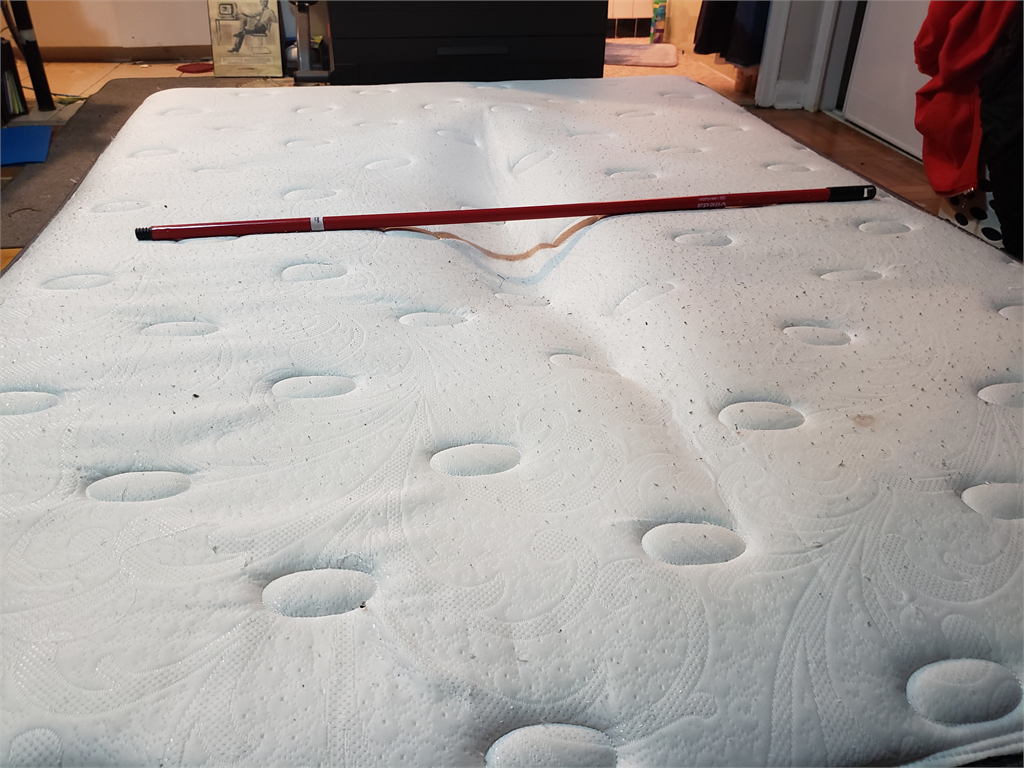If you’re having trouble determining whether or not your mattress is sagging and eligible for a warranty claim, you’re not alone. Many people struggle to figure out how to measure mattress sag for warranty. Fortunately, this article will provide an easy-to-follow guide on how to easily measure mattress sag for warranty claims. With a few simple steps, you’ll be able to accurately measure your mattress sag and determine if you can submit a warranty claim.
What is Mattress Sag?
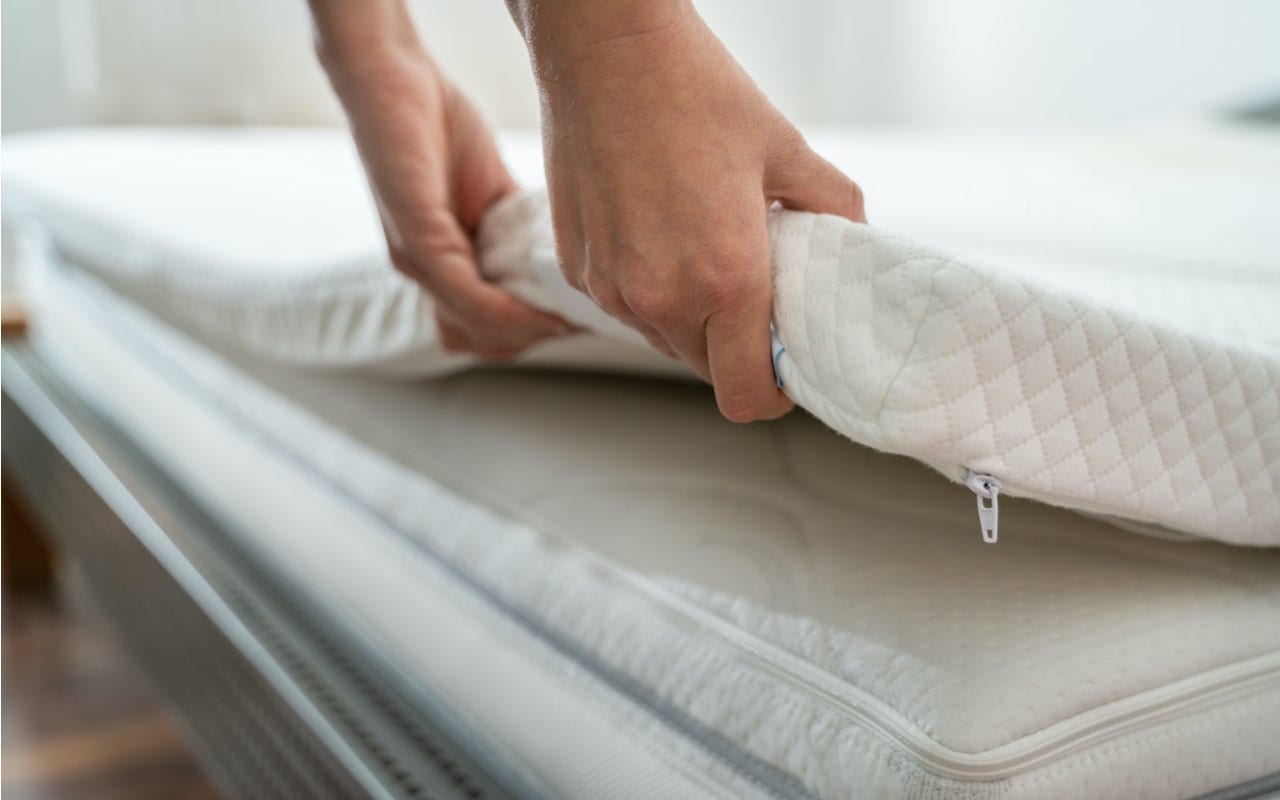
Mattress sag is the downward depression or indentation in the surface of a mattress that is caused by the weight of the body pressing down on it. It is a common problem with mattresses that are used for a long period of time, as the material may wear out and the support of the mattress is not able to hold up the weight of the body. This can cause a decrease in the comfort level of the mattress and may also lead to back pain and other health issues. It is important to be aware of mattress sag and to take steps to prevent it from occurring or to measure it for warranty claims.
Causes of Mattress Sag
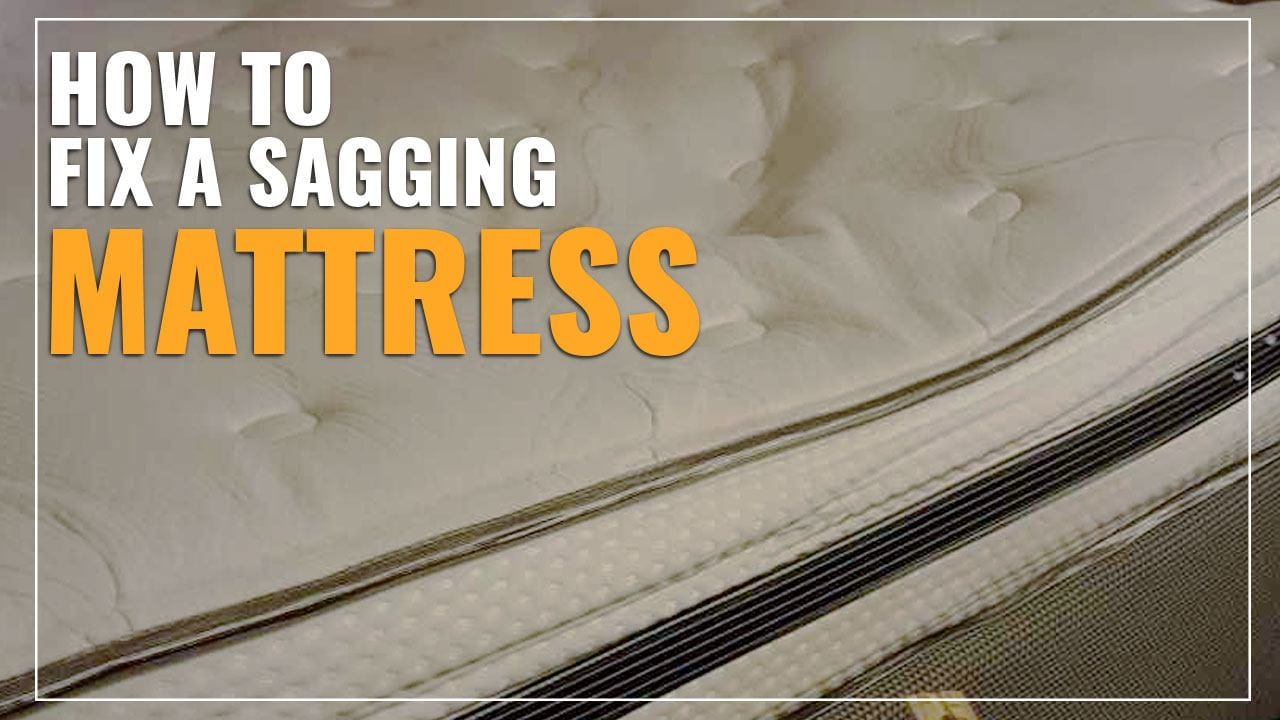
| Cause | Description |
|---|---|
| Faulty Design | Poorly designed mattresses may be prone to sag due to lack of proper support. |
| Excessive Weight | If a mattress is not designed to handle the weight of its occupants, it may sag over time. |
| Poor Quality Materials | Low quality materials may not have the durability to hold up to regular use, leading to sagging. |
| Aging | As mattresses age, they may become less supportive and may begin to sag. |
Mattress sagging can be caused by a variety of factors, including faulty design, excessive weight, poor quality materials, and aging. Mattresses that are not designed to handle the weight of their occupants may sag over time, as can mattresses made with low quality materials. Additionally, as mattresses age, they may become less supportive and may begin to sag.
When to Measure Mattress Sag
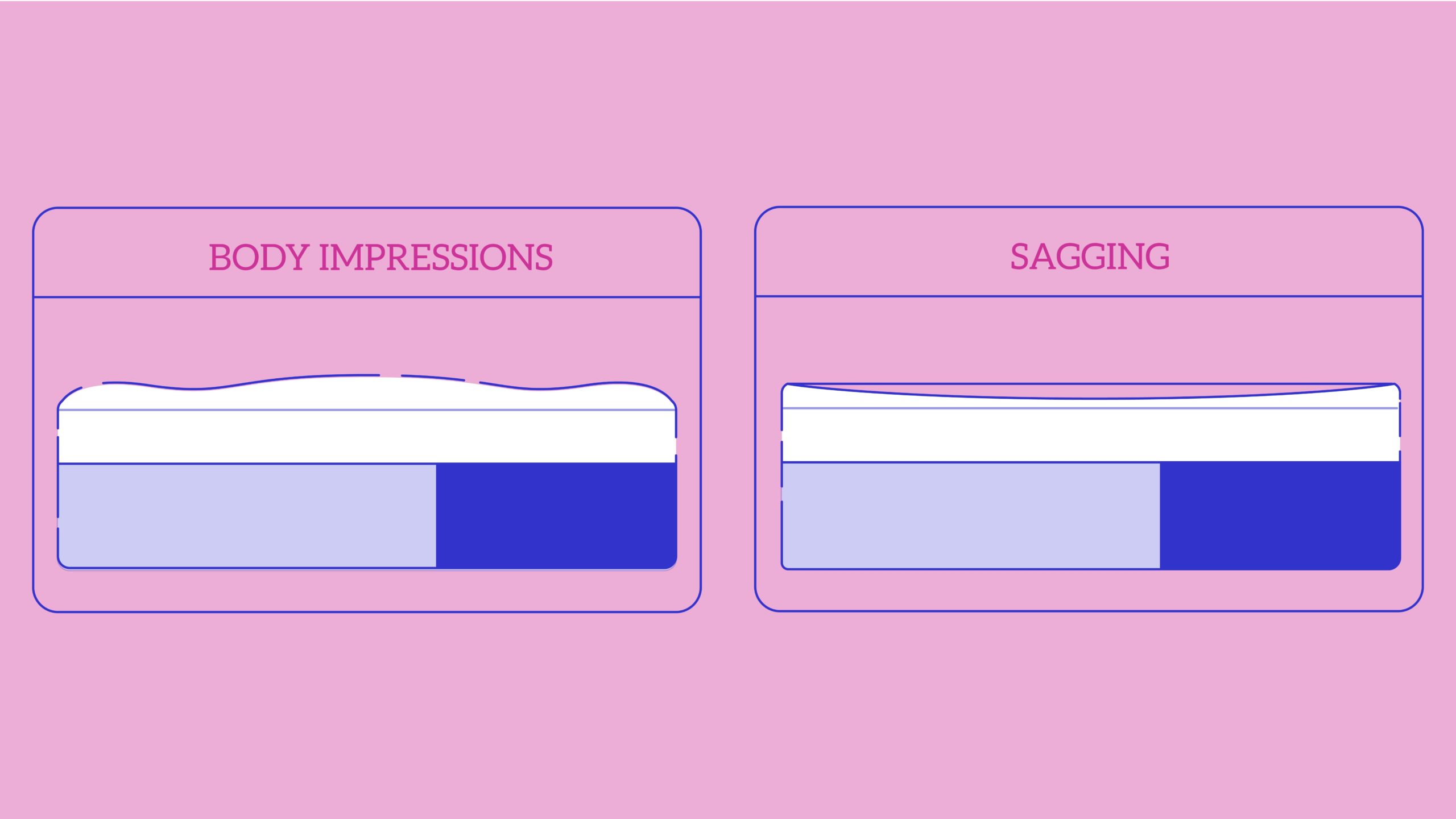
The best time to measure mattress sag is after at least 30 days of use. This allows the mattress to settle and any potential sagging to occur. To accurately measure mattress sag, ensure the mattress is fully supported by the box spring or foundation and the bed frame.
Measure mattress sag using a tape measure. Measure the distance from the center of the mattress to the floor. If the mattress sags more than 1.5 inches, it may not be within the manufacturer’s warranty. Consider taking photographs and saving receipts to back up any warranty claims.
Sagging mattresses can cause a range of issues including back pain, poor sleep quality, and decreased lifespan of the mattress. If you experience any of these issues, measure your mattress sag as soon as possible.
Different Methods for Measuring Mattress Sag
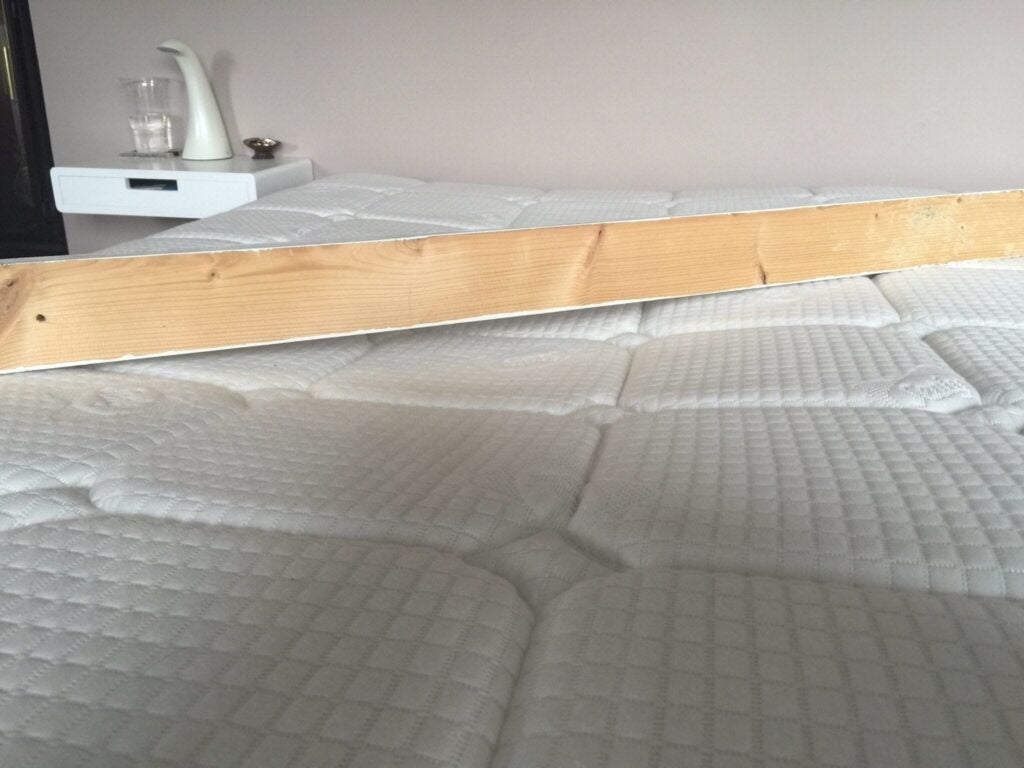
Visual Check
The easiest way to measure mattress sag is by visually assessing the mattress. Check the mattress for any sagging or dips; if you can see any, then it may be time to replace your mattress.
Measuring Tape/Yardstick
Another common method for measuring mattress sag is with a measuring tape or yardstick. Place the measuring tape or yardstick on the mattress and measure the distance from the top of the mattress to the bottom. If the measurement is more than 1.5-2 inches, then your mattress may be sagging too much and you should consider replacing it.
Weighted String Method
The weighted string method is also an effective way to measure mattress sag. This involves attaching a weight to a string and measuring the distance from the string to the mattress. If the distance is more than 1.5-2 inches, then your mattress may be sagging too much and you should consider replacing it.
Ball Bearing Test
The ball bearing test is another popular method for measuring mattress sag. Place a ball bearing on the mattress and measure the distance from the ball bearing to the mattress. If the distance is more than 1.5-2 inches, then your mattress may be sagging too much and you should consider replacing it.
Other Tools
In addition to the above methods, there are other tools available for measuring mattress sag. These include special mattress sag measuring devices and mattress sag test kits that can be purchased online.
How to Measure Mattress Sag
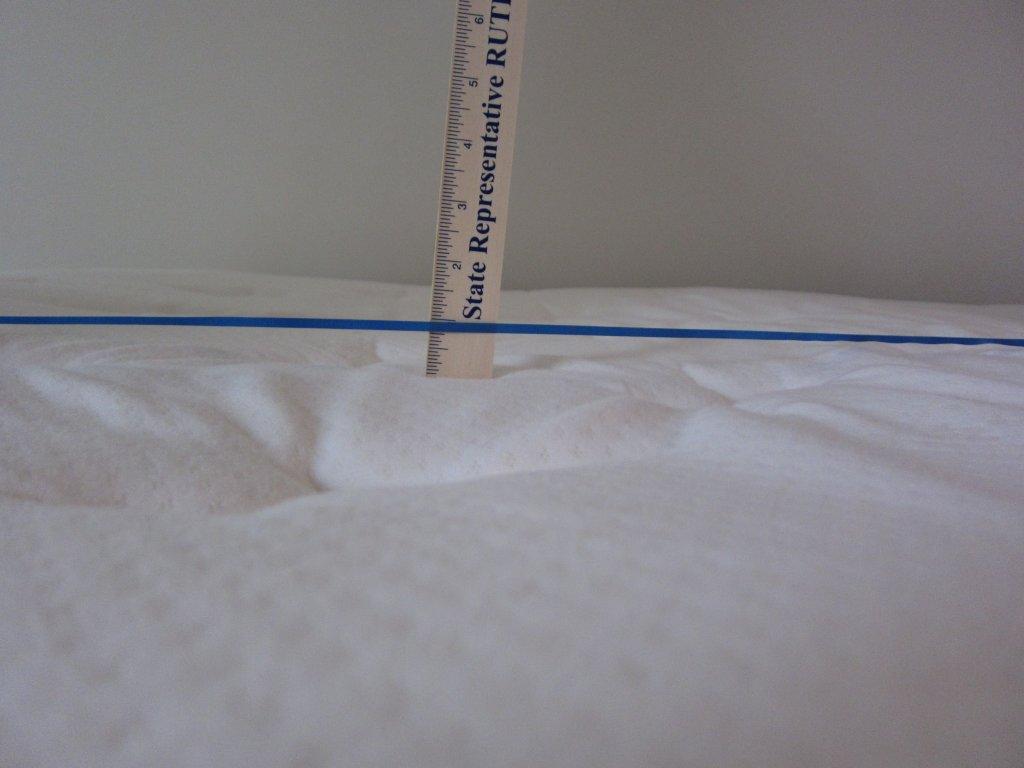
- Measure Height: To measure a mattress sag, use a tape measure to measure the height of the mattress at its thickest point. This will give you an idea of the base height of the mattress.
- Find the Sag Point: To find the sag point, press down on the mattress and observe where the mattress is the lowest. Mark this spot with a pencil.
- Measure the Sag Distance: Place the end of the tape measure on the surface of the mattress at the sag point and measure the distance down to the base of the mattress. This will give you the amount of sag in the mattress.
Once you have measured the sag, you can compare it to the manufacturer’s specifications to determine if it is within warranty coverage. If it is outside of the warranty’s coverage, you may need to purchase a new mattress.
How to Submit a Warranty Claim
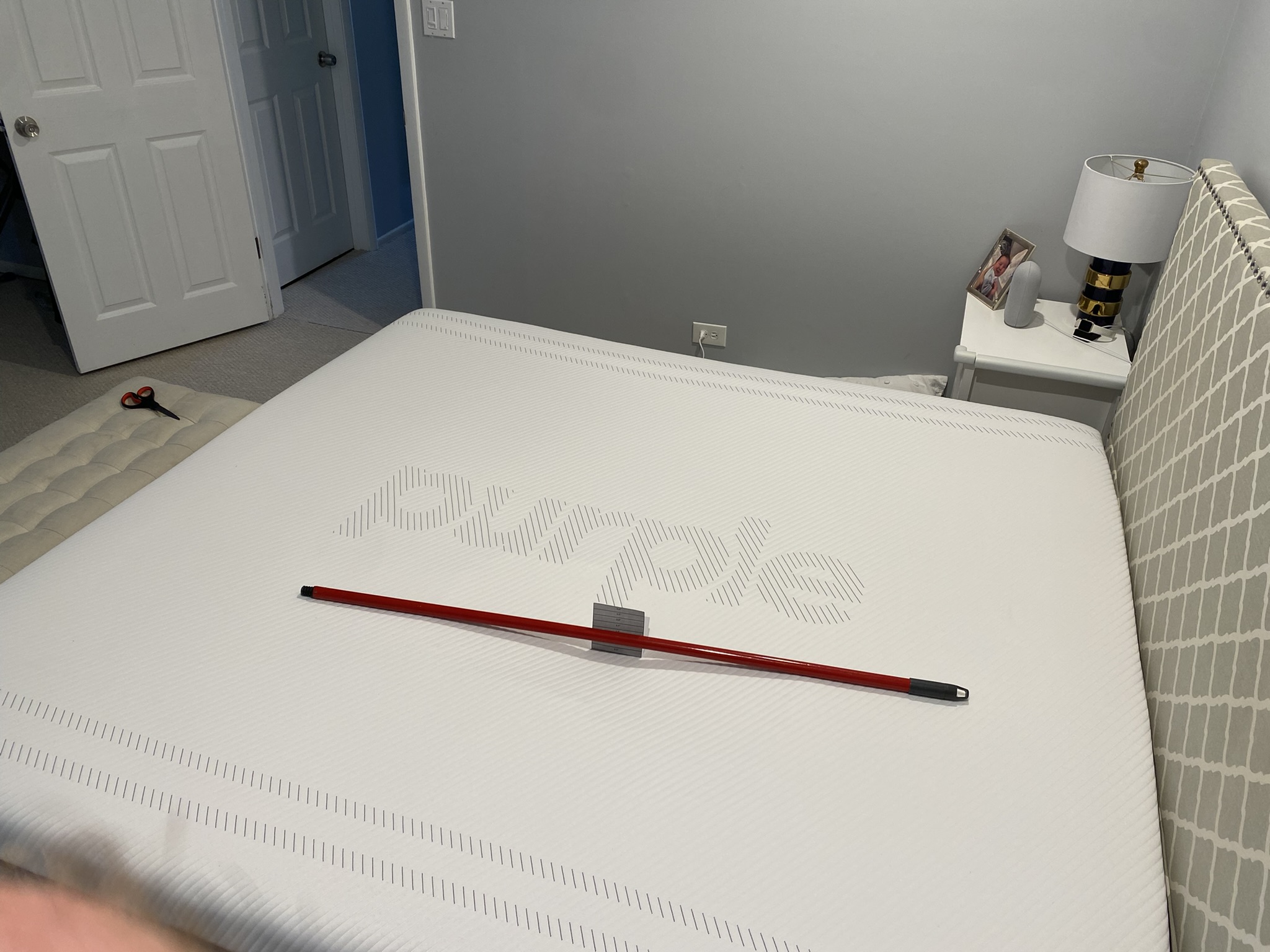
- Collect evidence – Most mattress companies require some form of evidence before they will process a warranty claim. This can include photographs, a statement from the customer, or other forms of proof.
- Gather the necessary documents – The company may require a copy of a receipt, a warranty card, or other documentation to verify the claim.
- Contact the company – Contact the mattress company and submit the evidence and documentation. Provide as much information as possible to support the claim.
- Wait for a response – The company will usually respond within a few days to a few weeks. Most companies will provide a replacement mattress or repair the existing mattress.
Tips for Filing a Successful Warranty Claim
Gather Documentation: Gather all the necessary documentation regarding your purchase, such as receipts, model numbers, and product numbers. Make sure to keep a copy of the warranty agreement available for reference.
Understand the Warranty: Carefully read the warranty agreement and understand your rights. Pay attention to any limitations or restrictions on the warranty, such as the length of coverage or specific exclusions.
Check Requirements: Check the requirements for filing a successful claim, such as photographs of the product, measurements, and instructions.
Keep a Record: Keep a record of all communication with the manufacturer, including phone calls, emails, and letters.
File the Claim: File the warranty claim with the manufacturer in a timely manner. Make sure to include all the necessary documentation and information.
Follow Up: Follow up on your claim to ensure that it has been received and processed. Be sure to keep a record of all communication with the manufacturer.
Stay Calm: Try to stay calm and remain polite when dealing with the manufacturer. Remember that they are likely trying to do the right thing, so being patient and understanding can help make the process smoother.
Frequently Asked Questions
What Types of Mattresses are Eligible for Warranty Claims?
- Innerspring Mattresses: Innerspring mattresses are one of the most popular types of mattresses, and most come with a warranty. Manufacturers typically offer warranties of 5-10 years on these mattresses.
- Memory Foam Mattresses: Memory foam mattresses are also covered under manufacturer warranties. Generally, memory foam mattresses come with a warranty of 5-10 years.
- Latex Mattresses: Latex mattresses are also covered under manufacturer warranties, usually lasting 5-10 years.
- Air Mattresses: Air mattresses, such as those used in adjustable beds, are usually covered under manufacturer warranties, usually lasting 5-15 years.
- Futon Mattresses: Futon mattresses come with a variety of warranties, ranging from 1-15 years, depending on the manufacturer.
What Tools are Needed to Measure Mattress Sag?
Measuring Tape: To measure the depth of the sag, a measuring tape is required to accurately measure the area.
Ruler: To measure the width and length of the sag, a ruler is necessary.
Level: A level is needed to measure the evenness of the mattress surface.
Flashlight: A flashlight will help to inspect the mattress in dark areas.
Camera: Taking pictures of the mattress sag is recommended for warranty claims.
What criteria must be met for a mattress to qualify as “sagged”?
A mattress must be considered sagged if it has indentations exceeding 1.5 inches in the sleep surface. The indentations must be permanent, meaning that they do not return to their original shape after being pressed. The mattress must also not be damaged due to misuse or abuse.
How long should one wait to measure mattress sag after the mattress has been slept on?
- Wait at least 24 hours after sleeping on the mattress before measuring sag.
- This allows the mattress to settle and regain its shape.
- Sleeping on the mattress causes it to compress and this compression needs time to dissipate.
- Take your measurements on the same day, but after 24 hours have passed.
- The mattress should be returned to its original shape by this time.
Does Mattress Sag Warrant a Full Replacement or Just a Repair?
Whether a mattress sag warrants a full replacement or just a repair depends heavily on the level of indentation found. Generally, mattress warranties require an indentation of 1.5 inches or deeper for a replacement. If the indentation is less than 1.5 inches, the mattress may be repairable. Deeper indentations, however, may require a full mattress replacement if repair attempts are unsuccessful.
Conclusion
Measuring mattress sag is an important step when it comes to making a warranty claim. Use a tape measure or ruler to measure the depth of the sag, and compare that to the manufacturer’s warranty specifications. A mattress that has sagged more than the manufacturer’s specifications can be eligible for a replacement, repair, or refund.
